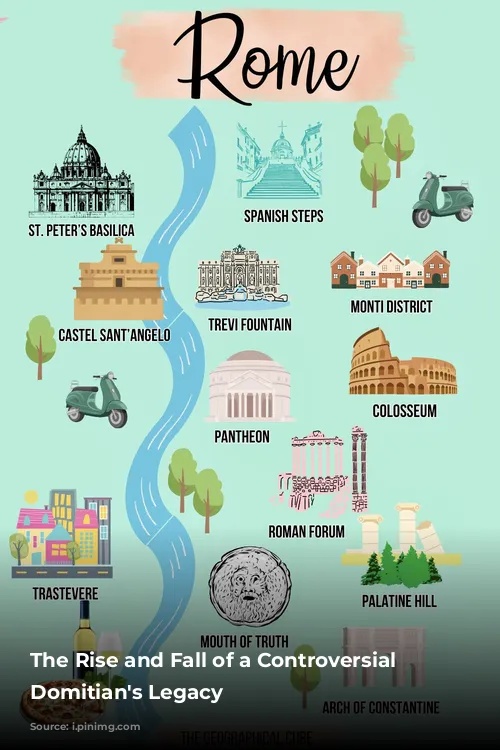Have you ever wondered about the Roman emperors who didn’t make it into the history books? While we all know about Augustus, Claudius, and Nero, Domitian, who ruled for over a decade, is often overlooked. Why is this? Was he truly a cruel and tyrannical ruler, or has history unfairly painted him as a villain? Let’s delve into the life and legacy of this controversial emperor.
The Early Years: A Troubled Succession
Domitian was the son of Vespasian, the general who restored order to Rome after the chaos of Nero’s reign. After his father’s death, Domitian’s older brother, also named Vespasian, ascended to the throne. While his father was charming and his brother well-educated, Domitian lacked both qualities, despite being considered intelligent. When his brother died unexpectedly, Domitian quickly claimed the imperial mantle, sparking rumors of foul play. His brother’s last words, “I have made but one mistake,” only fueled speculation that Domitian had poisoned him.
Adding to the early instability of his reign, Domitian moved the seat of government to the Imperial Court. This symbolic act signaled his desire for absolute power, distancing himself from the Roman Senate. Like Augustus before him, Domitian aimed to reform Rome’s morals and rebuild the city. Was this a noble ambition, or a dangerous obsession with power?
A Mixed Legacy: Achievements and Paranoia
Domitian’s early reign saw him tackle Rome’s crumbling infrastructure, constructing new temples, a stadium, and a concert hall. His most famous accomplishment was the Imperial Palace on Palatine Hill, a testament to his ambition. Initially, he was known for his generosity and fairness, but his relationship with the Senate soured when he began promoting members of the Equestrian Order to high office, prioritizing merit over tradition.
Domitian was also a shrewd economic manager, focusing on the city’s food and water supply, construction projects, military affairs, and the overall stability of the Empire. Although he did not personally lead his legions into battle, he oversaw successful campaigns against the Dacians.
Despite these positive contributions, Domitian’s paranoia grew throughout his reign, leading to the execution of several senators for treason. This paranoia extended to free speech, which he banned, further alienating him from his subjects. His thirst for power transformed the Imperial government into a more autocratic system, with Domitian declaring himself “Dominus,” or master.
The Emperor’s Downfall: A Bloody End
This rise in power and paranoia ultimately led to Domitian’s downfall. His own wife, Domitia, fearing for her life, conspired with other officials to assassinate him in December 96 AD. A member of Domitian’s staff, Stephanus, stabbed him in the groin, with other conspirators finishing the job. The Senate, overjoyed by his death, celebrated by tearing down his statues and arches.
The swift ascension of Nerva as Emperor suggests that he was also involved in the conspiracy. While Domitian’s death was met with relief and celebration, his legacy remains complex. While his reign was marred by paranoia and brutality, he also left a mark on Rome’s development and infrastructure. Even today, we can see his influence on Palatine Hill, a reminder that even the most controversial figures can leave behind lasting legacies.
